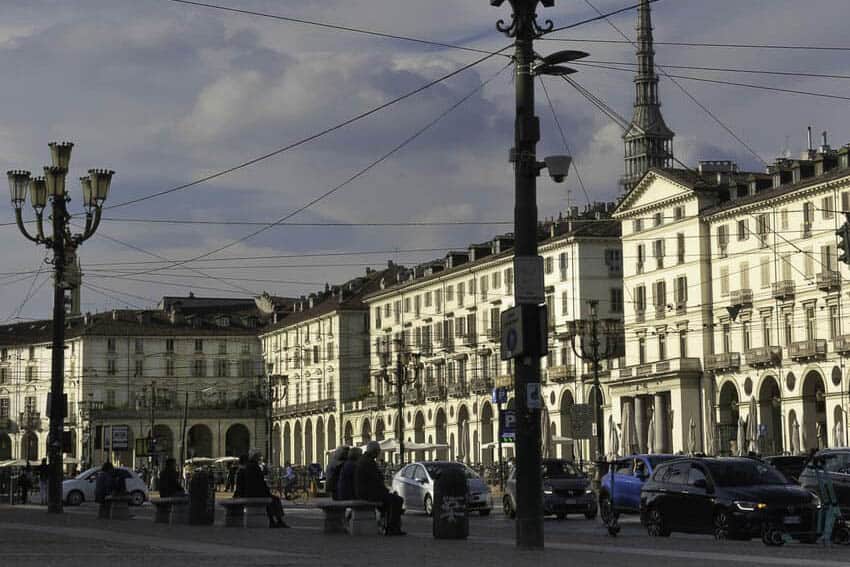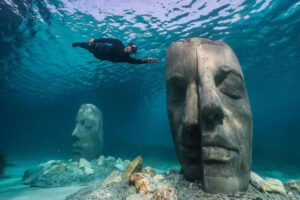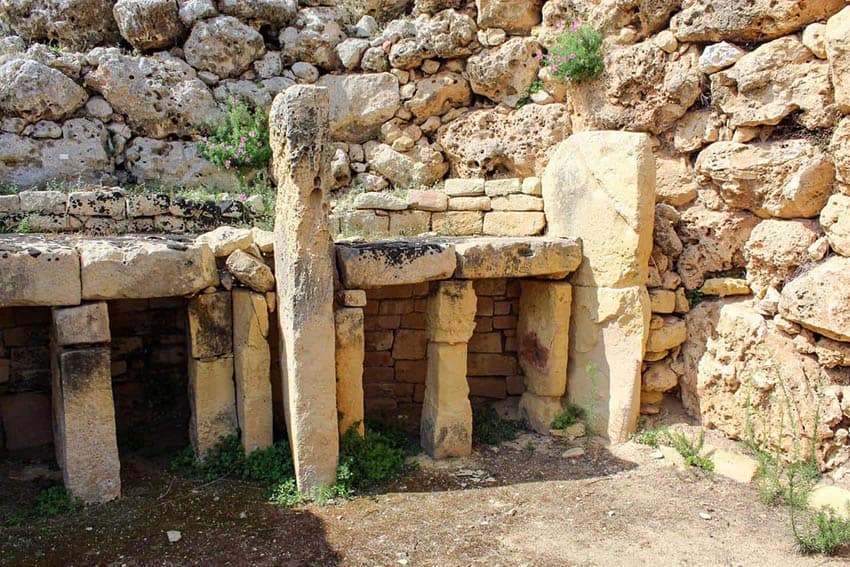Pantelleria: Land of Liquid Prayers
By Anneli Rufus

Flying south from Trapani to Pantelleria, a craggy island that’s technically part of Italy but only 37 miles off the coast of Tunisia, feels like a ritual passage to another world — especially when you’re told that this half-hour flight is often cancelled due to wind. Wind.
 Imagine it: Your modern trip to a palm-studded island that attracts A-list celebrities could without warning suddenly be subject to the same restrictions that constrained Odysseus. The only difference is that we don’t blame those cancellations on Aeolus, Zephyrus, Boreas, Eurus and/or Notus.
Imagine it: Your modern trip to a palm-studded island that attracts A-list celebrities could without warning suddenly be subject to the same restrictions that constrained Odysseus. The only difference is that we don’t blame those cancellations on Aeolus, Zephyrus, Boreas, Eurus and/or Notus.
But as we approached the island, buffeted, we begged those gods to let us land. The Time Tunnel had already begun.
Traces of Africa
On clear mornings, you can see Africa from Pantelleria’s jagged peaks. Even if we hadn’t already marveled over it on a map we could sense this proximity upon exiting the tiny airport.
The autumn sun blasted down on our hatless heads with that unyieldingly casual confidence you find in such places: a blinding heat that draws a sharp dividing line between those who can stand still in it for ten minutes and those who can’t.
This first trace of Africa that visitors detect in Pantelleria is a leaf-searing heat which in a bad mood we would call brutal but in a good mood we would call a blessing: bone-deep, ripening the fruits that flourish here and whispering to weary northerners: You need never wear winter coats again.
That promise (along with a light sprinkling of sumptuous resorts) has proven irresistible to celebrities from Truman Capote to Madonna to Sting, all seeking the perfect confluence of privacy, otherworldliness and warmth.
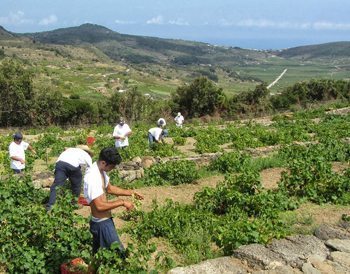
Giorgio Armani has a home-away-from-home here in a traditional dome-roofed house. Although today’s residents speak Italian, many place names are medieval Arabic — Mueggen, Gadir, Khamma, Bukkuram — thanks to a circa-700 CE Maghreb invasion that was neither the first nor the last in a 35,000-year skein of arrivals and occupations involving Phoenicians, ancient Romans, Byzantines, Arabs, Crusaders, Spaniards, Turks, Italians and, during World War II, Allied soldiers.
Roller-Coastery Roads
Leaving the airport in a Fiat Panda small enough to squeeze through Pantelleria’s narrow, roller-coastery island roads, we saw scant identifiable evidence of these past inhabitants.
Instead we saw olive-green, vineyard-striped slopes racing down toward a sometimes-cobalt, sometimes-stonewashed-denim sea. A Parisian traveler was sharing our Panda. He thrust his head out its window and, gazing from peak to sea, kept repeating Wow, wow, wow. We wondered how to spell that in French.
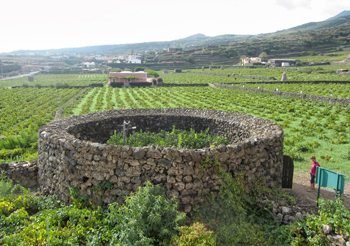
Studding the cliffs and slopes and lining those narrow roads — on which local custom finds drivers politely nodding, smiling and negotiating gracious but mandatory do-si-dos to let each other pass — are distinctive dome-roofed Pantellerian houses, known as dammusi, ubiquitous here but seen nowhere else in the world.
Their walls are built of pigeon-gray volcanic stone up to three feet thick to deflect the heat and wind, and their domes — gentle pale humps, each resembling the back of a hippopotamus emerging from a pool — are ingeniously designed to collect and conserve rainwater in hidden subterranean basins, because Pantelleria has no fresh water of its own.
Stark Contrasts
Natural fresh water isn’t all that this island lacks. Thanks to rockbound shorelines that are treacherous for boats, Pantelleria is one of the few Mediterranean islands with no fishing industry; thus its local “Pantescan” cuisine — while rich in ricotta cheese, capers, eggplant, tomatoes and island-grown olive oil — is almost entirely seafood-free.

This five-mile-wide seabound speck lacks so much as one single natural sandy beach. But it compensates for this with sturdy volcanic grandeur — such as the stark, sandless, rock-edged cove where we spent a few hours swimming and sunbathing amidst outer-spacey serenity, paddling in the body-temperature shallows while gazing up at broad swatches of stone and sky that hovered overhead like brushstrokes in a Miró masterpiece.
Pantelleria also has The Elephant, an offshore rock arch evoking a proud pachyderm plunging its trunk into the sea. And it has cliffs dropping seaward sheer and black.
Certain sunny islands sweetly rockabye their visitors beyond the tick-tock consciousness of time. With its rocks and rambling Byzantine ruins, with its hot springs and no-joke weather and warm, caldera-cradled salt lake — appropriately named the “Mirror of Venus” — Pantelleria set us inside our skin, suddenly aware of our smallness and vulnerability against history, stone edges and uncompromising elements.
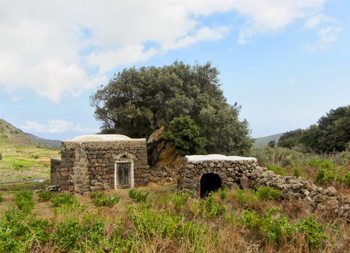
Most visitors spend little time in the island’s capital city — also called Pantelleria — because all of its dammusi and other historic structures were destroyed in 1943, thanks to a tragic misunderstanding which Pantescans still recount bitterly today.
British and American troops needed Pantelleria as a launching pad from which to invade Sicily, so for weeks they relentlessly bombed the hilltop pillboxes of the Italian garrison. Knowing they were licked, the Italian forces tried to surrender on the day before the final amphibious assault:
But in the chaos of war, the Allied commanders were unaware of this attempted surrender — so in one final apocalypse, Allied troops demolished the capital city.
So we too headed out to the countryside.
We took steep climbs, past the bee-loud vineyards up those green slopes dotted with dammusi and with stone shacks built to shelter donkey-drivers far from home. We plucked fresh capers — the most prized of their kind in all of Italy — straight off the bush, tasting like the flower buds that they actually are.
These tiny and uniquely pungent capers are pulverized into Pantescan pesto and gently cooked up sweet, salty and exquisitely unctuous into what might be the world’s best caponata.
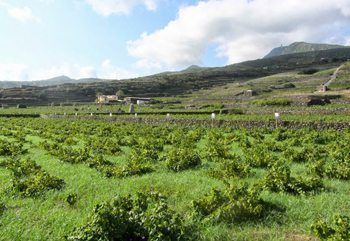
Everyone we met said we were wildly lucky because the wind was unseasonably slack. Wind velocity is a constant subject of conversation. One woman who divides her days between Pantelleria and Palermo told us what happens here when the wind causes power outages and cancels flights: Long dark nights. Jokes and stories told by candlelight.
Tough and Sweet
Blazing brightness. Sacred shade. Sips of passito de Pantelleria, a honey-sweet golden wine made from a type of grape that flourishes here: Zibibbo, also dubbed “Moscato d’Allesandria” or “Alexandrian Muscat,” thanks to its ancient North African origins.
Considered by oenologists to be among the world’s oldest varietals, Zibibbo was the grape of choice in ancient Egypt and was likely brought to this island eons ago by Phoenician colonists.
Exploring Pantelleria today, you will still see Zibibbo vineyards ascending the terraced hillsides and stretching far across the valleys. Zibibbo’s perfumes are mainly concentrated in its skin: a hardy, sun-loving, wind-resistant flesh that looks like cinnamon-dusted jade when ripe.
One local winery, Donnafugata, calls its award-winning passito Ben Ryé: Pronounced “ben ree-ay,” meaning “born of the wind,” it tastes like liquid prayers.
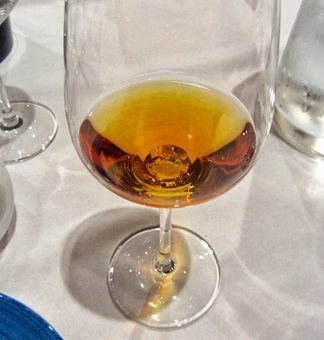
If you’d like to watch grape-harvesting in action, visit in late August through September.
Unlike most other grapevines in the world, which are trained to reach upward, Pantelleria’s are trained to stay very close to the ground and are further shielded from the wind by hand-built, volcanic-stone walls.
Local growers say that these arid, windy conditions are exactly what Zibibbos need to reach peak sweetness — and that strong winds actually help the grapes by keeping their skin dry, thus resistant to mold and rot. Because Pantelleria’s terraces are too sinuous and its roads too narrow for large farm machinery, nearly all agriculture here is done by hand: More shades of a pre-industrial past.
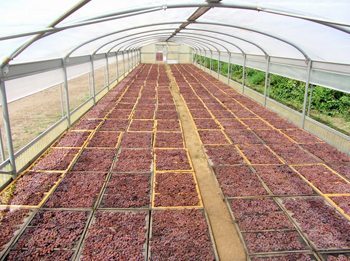
Donnafugata welcomes visitors to its winery. That’s a rarity in Italy.
“Only the best grapes get dried,” explained Donnafugata’s technical director Antonio Rallo as we stood amidst 120-year-old vines lining the pumice- and obsidian-studded hillside above the winery.
“We’re not trying to capture the flavor of the fresh grape but rather to dry the grapes under the sun in the wind to create an aroma that is completely different from that of the fresh grapes. This is our philosophy: not to preserve the aromas of the fresh grape but to find the new aromas of the dried grape.”
We watched workers cutting grapes, cleaning and inspecting each bunch carefully before placing it into a plastic bin. The bunches would then spend two weeks atop open-air drying racks, turned occasionally to let the weather do its work — turning plump fruit into ultra-sweet raisins many times the size of normal raisins.
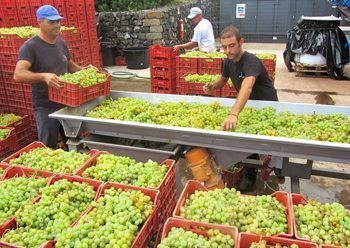
Tricky Kisses
Back at the winery’s tasting room, we paired passito with local pastries known as “Pantescan kisses,” baci Panteschi: sweet ricotta cheese sandwiched between delicate flower-shaped pastries formed by an iron mold dipped into thin batter. Every bite was a beautiful challenge, as soft cheese squirted sensually through the crisp golden shards. Stark contrast defines even the pastries in this place.
IWe took another long look at those cliffs. Strolled through the sleepy streets of Khamma town. And thought of never, and forever, and the wind.
IMG_1352.JPG
Zibibbo grapes, ready for harvest, in front of a centuries-old wall.
Where to Stay:

La Kuddia
10 Corso Umberto I, Pantelleria
Phone: 0923 911694; Cell: 3485449985
Where to Eat:
La Favarotta
Contrada Khamma, Khamma fuori
Phone: 0923-915446 (In all cases, it’s best to call after you arrive to ask for directions: street addresses on Pantelleria are vague.)
Where to Sample Local Wines:
Contrada Khamma Fuori 6
By appointment only.
Phone: 39 0923 915649
Getting Around:
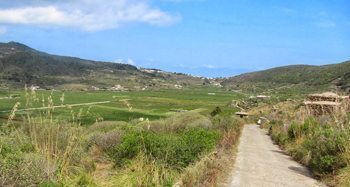
The island is small, but not quite small enough to explore entirely on foot, and although there are local buses, their schedules and routes are hard to decipher.
Your best bet is to rent a car at the airport; make sure to get the smallest car available, which makes it much easier to navigate Pantelleria’s challengingly narrow roads. Enterprise has just recently begun renting cars in Italy, it’s a good choice if you’ve never rented in Europe before.
How to Get There:
Various regional and charter airlines fly in and out of Pantelleria only during high season (late spring to early fall); the easiest way to learn which airlines are currently serving the island is to check the Web site of Pantelleria Airport itself, which lists all incoming flights for the upcoming months:
Darwin Airline generally has daily flights to Pantelleria from Trapani and Palermo throughout the year:
Love Italy? Get GoNOMAD’s Italy Plane Reader for dozens of fascinating stories like this to read on your Kindle, Nook or iPad!

Anneli Rufus is an award-winning author and journalist whose books include Weird Europe, California Babylon, Party of One: The Loners’ Manifesto, and the upcoming Unworthy: How to Stop Hating Yourself.
- The Wild Mississippi: 2340 Miles Across Ten States - April 8, 2024
- Exploring the Floating Villages of Tonle’ Sap Lake - April 3, 2024
- Woman Traveling Solo on Turkish Buses - March 27, 2024


